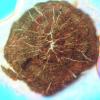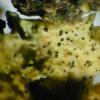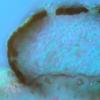
21-12-2025 21:32
Pol DebaenstHello, Garden, Burgweg 19, Veurne, BelgiumOn 10/1

22-12-2025 00:47
Patrice TANCHAUDBonsoir, récolte à proximité du milieu dunaire

21-12-2025 21:40
Isabelle CharissouBonjour, j'aimerais connaitre les références de

21-12-2025 21:31
Pol DebaenstHello, Garden, Burgweg 19, Veurne, BelgiumOn 10/1

21-12-2025 21:31
Pol DebaenstHello, Garden, Burgweg 19, Veurne, BelgiumOn 10/1

20-12-2025 23:08
Patrice TANCHAUDBonsoir, récolte sur sol sablonneux dans l'arri�

21-12-2025 09:32
Hello.A tiny ascomycete found embedded in wood in

20-12-2025 15:47
Mirek GrycHi.These grew on pine wood that was heavily covere
I found a strange (to me) coelomycete growing as well on fallen needles of Picea abies as on Cladonia digitata growing at the foot of the tree.
Description: Conidiomata solitary, sessile, on the squamules and podetia of Cladonia digitata, cushion-like to suborbicular, black, 100–150 µm in diam., opening by radially splitting of the wall (habitually like the peristome of bryophytes); wall brown, composed of one layer of pseudoparenchymatous cells, 1–2 µm thick, cells in surface view more or less in radial lines, rectangular, c. 3–4 × 4–4.5 µm; pycnidial cavity first filled with thin-walled, hyaline, isodiametric cells, 3–4 µm diam., later these cells are dissollving, some of them turning to broadly ampulliform conidiogenous cells, 4–6 × 3.5–5 µm; conidia non-septate, ellipsoid, hyaline, both ends rounded, with one minute guttule near each end, (3.5–)4.1–5.3(–6.0) × (2.0–)2.1–2.7(–3.0) µm, l/b = (1.3–)1.7–2.3(–2.8) (n = 20).
Strange to me is the splitting of the pycnidial wall and the conidiogenous cells developing inside the lumen and not on the inner side of the wall. Fist idea was Rhizospaera, but this has other pycnidia. Actinothyrium has fitting pycnidia, but here the conidia are filiform. Can anyone help?
Hi Wolfgang,
Strange to find these thyriothecia on needdles as on Cladonia. On needles grow Microthyriaceae. On Cladonia we can observe some Lichenopeltella. ¨Pehaps you have the asexual morph of one of them, and the best thing to do is probably to wait for the sexual morph.
Alain
I examined it carefully, it is really the same taxon on the needles as on Cladonia. Microthyriaceae is a good hint, but I have no idea how asexual state of this family look like. Lichenopeltella I think I can exclude because of the missing basal plate and the thickenings around the ostiole.
Wolfgang



